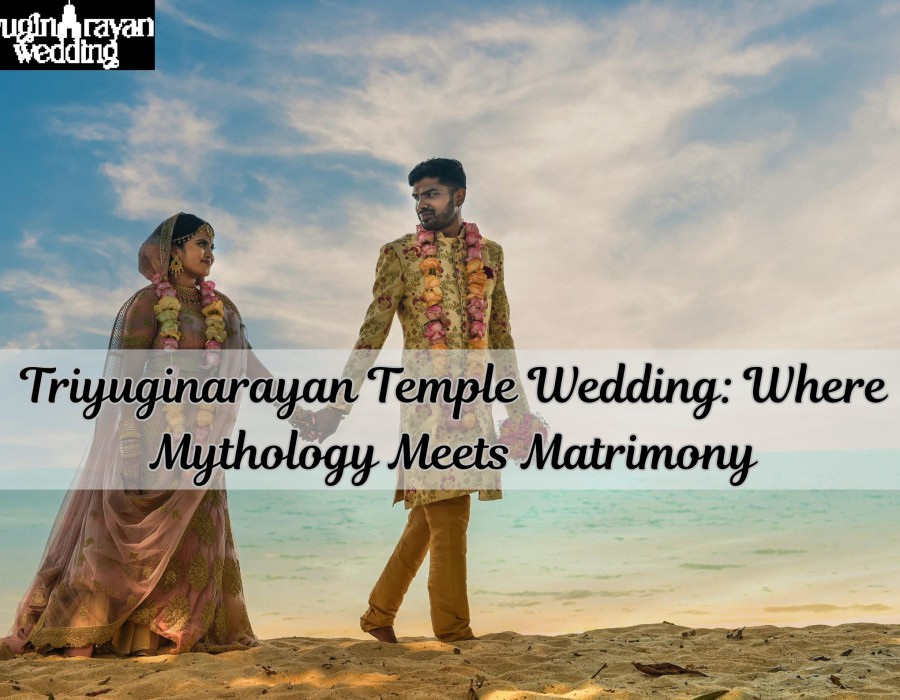Introduction
Weddings are meant to be timeless, but what if your union was sanctified at a place believed to be the site of the first-ever divine wedding?
Hidden in the Garhwal Himalayas lies a mystical destination—Triyuginarayan Temple—where mythology, serenity, and tradition come together to create a wedding experience unlike any other. For couples seeking something sacred, offbeat, and deeply meaningful, a Triyuginarayan Temple wedding promises more than vows—it offers a spiritual bond that echoes through the ages.
The Legacy of Divine Union
Triyuginarayan is not just another temple—it's a site etched in Puranic legends. According to Hindu mythology, this is where Goddess Parvati and Lord Shiva tied the knot, with Lord Vishnu acting as the divine witness and Lord Brahma performing the rituals.
The temple has been a silent witness to this celestial union, and even today, the Akhand Dhuni (eternal flame) continues to burn in its courtyard, said to have originated from their wedding ceremony.
This flame isn't just symbolic—it’s a living legacy of love, purity, and eternal togetherness. Couples often include offerings to the Akhand Dhuni as part of their own wedding rituals, making their marriage part of this sacred tradition.
Triyuginarayan Temple Wedding: A Rising Trend
While exotic beach and palace weddings have dominated the destination wedding scene in India, a new trend is emerging—spiritual wedding tourism. And Triyuginarayan is leading the way, offering couples a chance to get married not only in nature’s lap but under divine blessings.
Here’s why this ancient village in Uttarakhand is gaining popularity:
1. Unique Religious Significance
Getting married at a location where Lord Shiva and Parvati were wed offers an unparalleled sense of connection to Hindu heritage. It’s not just a venue—it’s a part of divine history.
2. Peaceful and Intimate Atmosphere
Unlike crowded city temples or commercial venues, Triyuginarayan offers a quiet, remote, and scenic setting. With the temple at the center of a quaint Himalayan village, you’ll experience spiritual stillness few places can offer.
3. Budget-Friendly Without Compromising Beauty
Despite its extraordinary backdrop, the cost of a wedding here remains modest. Couples can arrange a traditional wedding for ₹50,000 to ₹2.5 lakh, depending on the scale and services required. Planners and local support teams provide custom packages covering rituals, decorations, photography, and guest stay.
4. Government Support for Destination Weddings
Uttarakhand’s tourism department has been promoting Triyuginarayan as a spiritual wedding destination. Improvements in roads, homestays, and local planning services have made it easier and safer for families to host weddings here.
How to Host a Wedding at Triyuginarayan Temple
Here are essential tips for planning a seamless wedding at this divine location:
- Get Permissions in Advance: The temple allows one wedding at a time. Coordination with the temple committee and local authorities is necessary.
- Choose the Right Time: Ideal months are October to early June. Winter weddings are magical but may face snow-related travel delays.
- Local Planners Are a Boon: Many reliable planners in Rudraprayag and Guptkashi provide full packages, including rituals, transportation, music, décor, and even forest permissions if needed.
- Stay and Food: Accommodation for guests is available in nearby areas like Sonprayag, Guptkashi, and Phata. Traditional Garhwali meals and simple vegetarian catering options can be arranged locally.
Conclusion
A Triyuginarayan Temple wedding is more than a cultural experience—it’s a journey into a sacred space where love has already stood the test of time. This is a place where myth meets reality, where the gods themselves are said to have witnessed the union of soulmates.
For couples who value spiritual depth, natural beauty, and timeless traditions, Triyuginarayan is not just a destination—it’s the beginning of forever. Amid chants, sacred fires, and the Himalayan wind, two souls unite, not just for a lifetime, but in the footsteps of divine eternity.





Comments